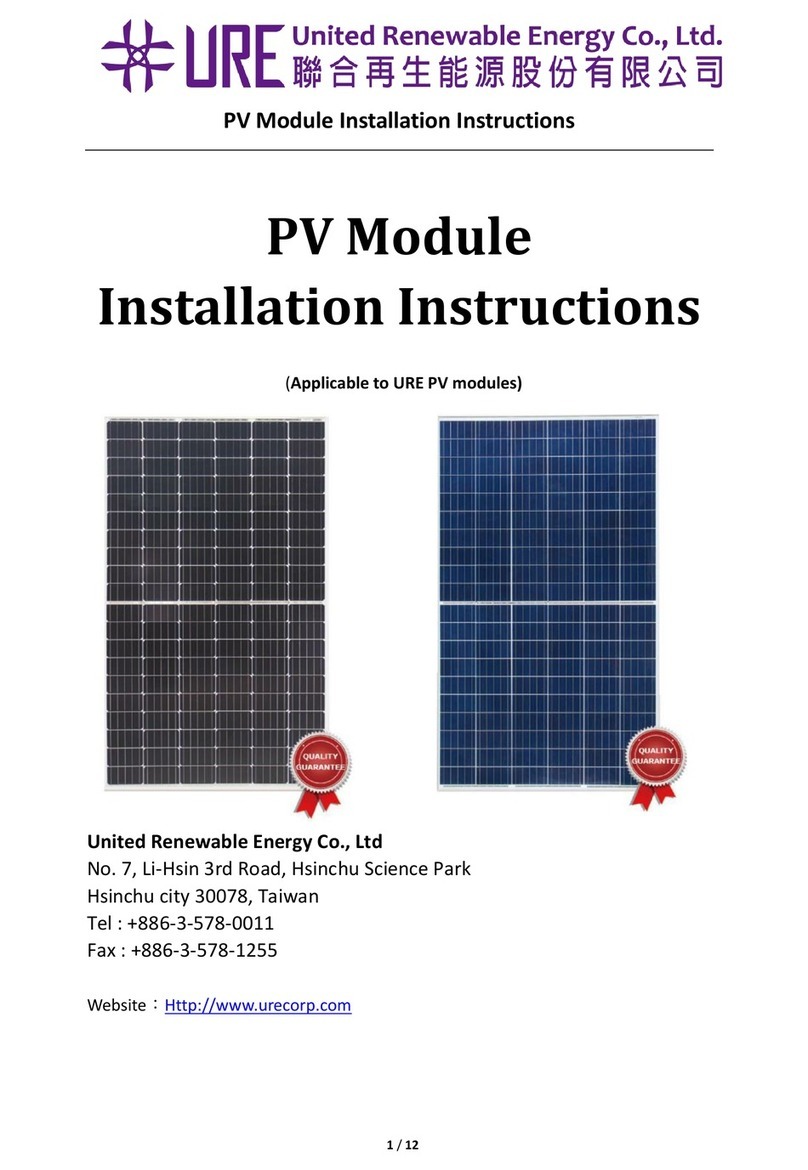
-
Grounding wires must be connected to the module frame at one of these locations.
-
Great care should be exercised to ensure that corrosion caused by the grounding means is avoided.
-
Corrosion can increase the resistance of the grounding connection on the module, or can even cause
the grounding connection to fail entirely.
-
Corrosion can be caused by the effects of weather, humidity, dirt and so on. Corrosion can also be
caused when two dissimilar metals contact each other (galvanic action).
-
All grounding hardware (nuts, bolts, washers, screws, etc.) must be stainless steel except other
specification (it should use corrosion-proof fixing material), as shown in Fig. 3.2.
-
The grounding wire should not be smaller than 12 AWG.
-
The grounding wire should be multi conductor and rated of 105°C and 1000V.
-
Recommended torque value is 2.3 N-m (20.4 lb-in).
There are two approved methods to ground URE modules.
Method (1) Grounding Using Bolt and Nut
-
To the grounding hole, secure the grounding wire with stainless steel hardware consisting of bolt,
spring washer, flat washer, cup washer, star washer and nut as shown in Fig. 3.2.
-
Length of bolts should not be more than 25 mm in order to avoid contacting the back sheet of module.
-
The use of cup washer, also called terminal cup washers, is to prevent the grounding wire slipping out
from under the screw head (and/or the flat washer).
-
To make sure the cup washer is placed between the wire and module frame.
-
Choose an adequate size for the cup washer and flat washer so the wire is fully clamped between
them.
-
The star washers must be used to make the electrical connection between grounding hardware and
module frame by scraping off the anodized film of Al frame.
Method (2) Grounding Using Grounding Lug
-
To select a grounding lug listed for direct burial and outdoor use (tin-plated, solid copper lay-in lug
with a stainless-steel set screw) capable of accepting a 4-12 AWG copper conductor, e.g. ILSCO GBL-
4DBT, Burndy CL50-1TN.
-
Length of bolts should not be more than 20mm in order to avoid contacting the back sheet of the
module.
-
The star washers must be used to make the electrical connection between grounding hardware and
module frame by scraping off the anodized film of Al frame.
-
To the grounding hole, secure the lug with stainless steel hardware consisting of bolt, flat washer, star
washer and nut as shown in Fig. 3.3.





























